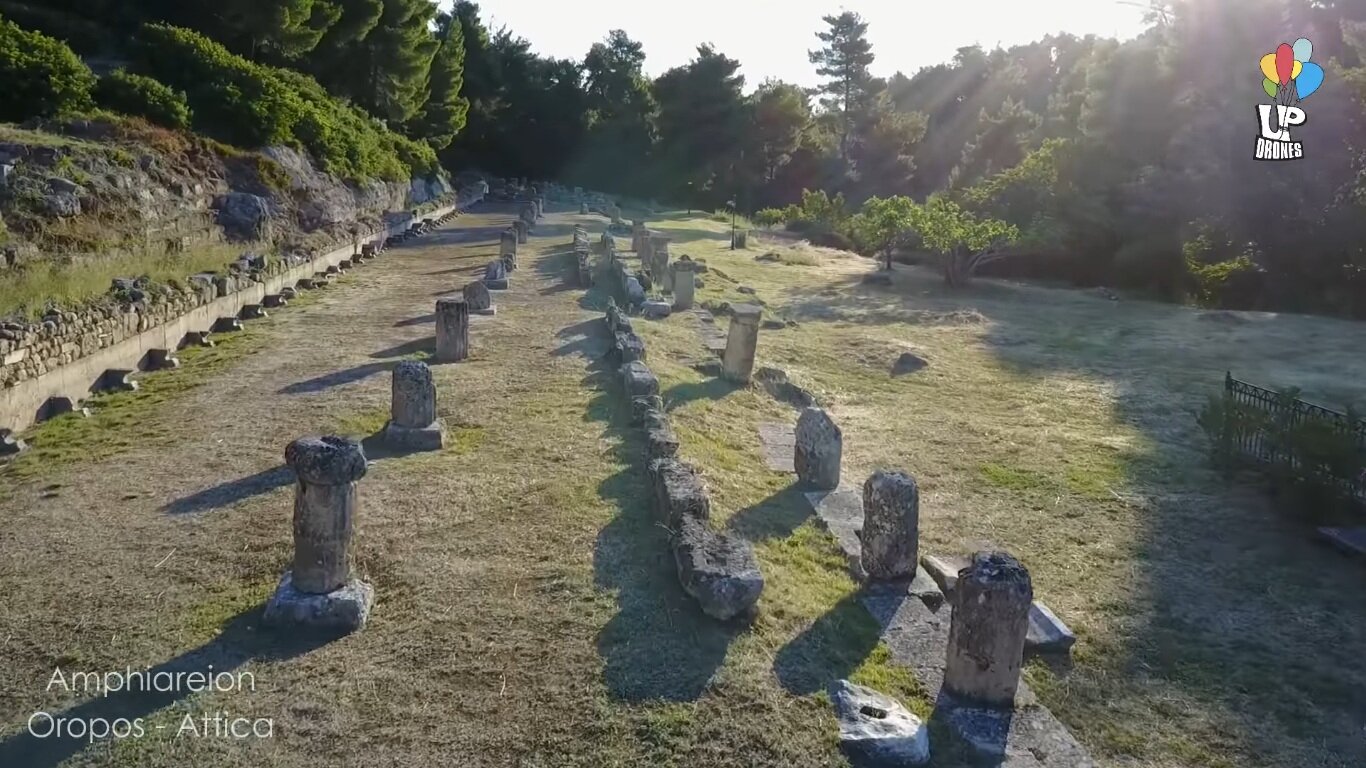Amfiareio is located in the northeast of Attica, in the area of Oropos, near the settlement of Kalamos. It was founded at the end of the 5th century BC when Oropos was under the influence of the Athenians.
The period of its greatest prosperity was the 3rd century B.C. and the first half of the 2nd century B.C. In a speech, Lysias informs us that the Athenian Polystratos was commander of Oropos before 411 B.C.
In 313 BC Oropos was conquered by the general of Antigonus of the One-Eyed, Ptolemy. In 287 BC Oropos became a member of the community of the Boeotians and a flourishing of the Amphiareion began that lasted until 146 BC.
Amfiaraos was from Argos and was the head of the local royal family. He excelled in leaping and divination. He married Erifili, the daughter of Adrastos, and took part in the Argonaut Campaign, the hunt of the Caledonian Boar, and the campaign of the Seven against Thebes. But Zeus, who loved him very much before his adversary killed him, tore up the earth and adopted Amphiaraus and his chariot. Thus he was worshipped as a miracle-working god and diviner who heals body and soul.
The fratricidal campaign of the Seven against Thebes had been organized by Amfiaraos' father-in-law, and as the hero was bound by oaths with Erifili, he was compelled to take part in it, though he foresaw the end for himself and the other warlords.
He was worshipped in the most important sanctuary in one of the oldest cities of ancient Greece in Oropos. The sanctuary flourished in the 1st century BC thanks to the Roman general Sulla. The cult of Amphiaraus faded with the prevalence of Christianity. Crowds from all over the Greek world came to the sanctuary and many visitors offered monetary donations. Because Amfiareio was so crowded, Oropians published important decisions, treaties, public documents of general interest, resolutions honoring someone, proclamations, all engraved on the pedestals of the statues and columns.
At the end of the 5th BC, two small altars were erected, the sacred well and the theater from which the faithful watched the sacrifices.
In 414 BC, during the Peloponnesian War, the Boeotians, with the cooperation of the Eretrians, captured Oropos from the Athenians until 367 BC, whereupon Oropos gained complete freedom. After the battle of Chaeronia, in 338 BC, Philip ceded Oropos back to the Athenians.
Watch the video - drone about Amfiareio, the unknown oracle of Attica:











